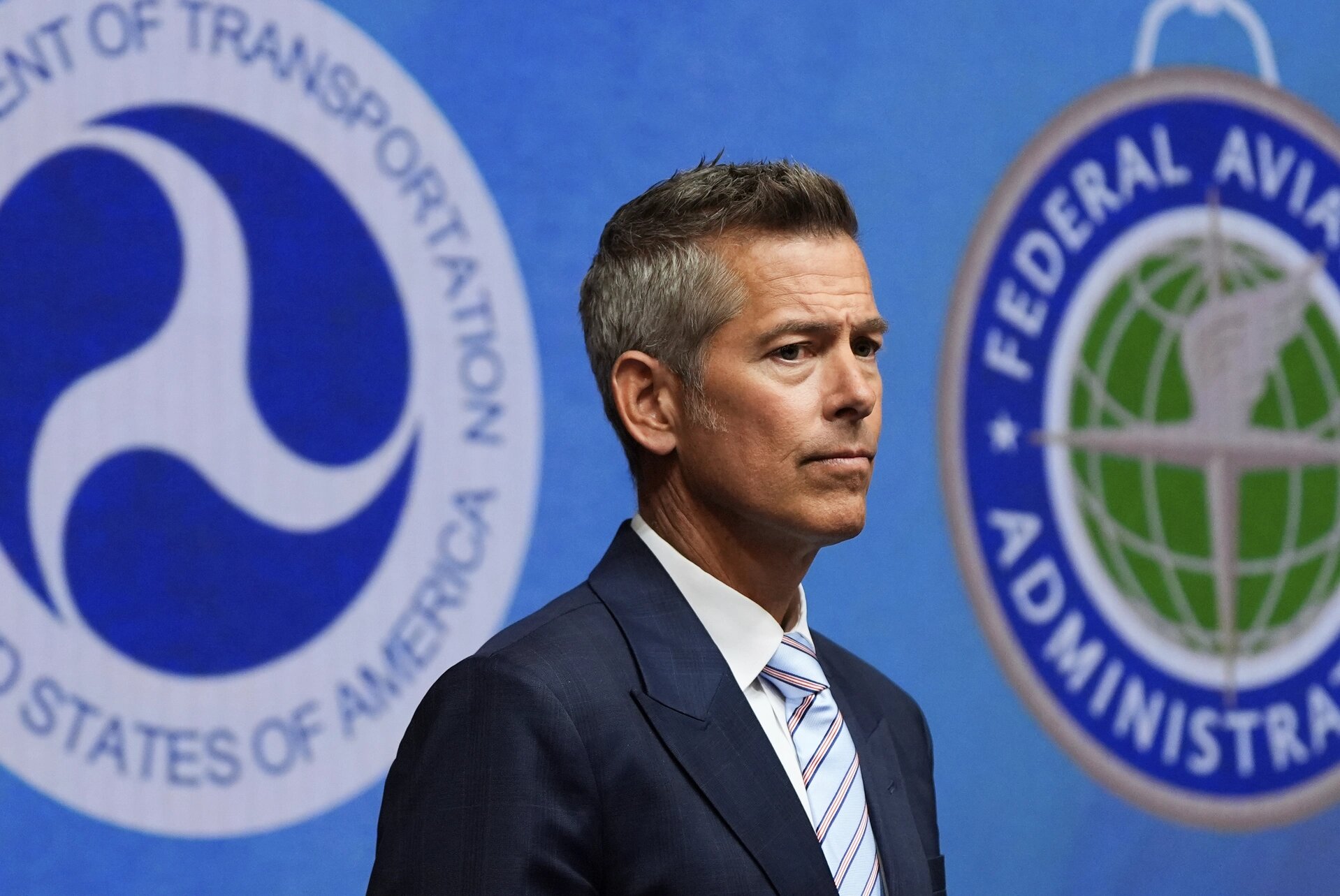Here’s the latest on flight cuts at 40 busy airports across the United States.

Air travel headaches aren’t over yet as the end of the federal shutdown nears — but a reprieve is on the horizon.
The Transportation Department suggested in a Tuesday statement that it would ease restrictions on the number of flights allowed at 40 key airports once it sees an improvement in the worrying safety trends that emerged across the country during the shutdown. But it also needs the air traffic controllers who have taken time away from their unpaid, high-stress jobs to return.
On that front, there were promising signs Tuesday. The Federal Aviation Administration was reporting only a few staffing issues nationwide.
“Today has been a much better day. A lot more air traffic controllers are coming in,” Transportation Secretary Sean Duffy said at Chicago O’Hare International Airport. “I think our air traffic controllers are seeing an end to the shutdown and feel more hopeful.”
“We had four staffing triggers today. On Saturday, there were 81. I think Sunday was 53,” he added.
During an earlier appearance in Wisconsin, Duffy had said he worries that absent controllers won’t immediately come back once the shutdown ends.
“We’re gonna watch, analyze, encourage them to come back,” he said. “But, again, we’re gonna start to alleviate the restrictions … only when the data says we should.”
Controllers will get 70 percent of their back pay within 24 to 48 hours of the government reopening, Duffy said in Chicago. They will receive the remaining money in about a week.
“We need controllers back in towers,” DOT added in a statement to POLITICO — when that happens, the FAA can see “if trend lines are moving in the right direction.” The department said the flight reductions are not permanent and are based on recommendations from an FAA safety team.
DOT and the FAA have never said how many of the agency’s more than 13,000 controllers have missed work during the 40-plus days since the lapse in federal funding began Oct. 1. But replenishing the ranks of controllers on duty at airport control towers and other FAA facilities has emerged as one of the key steps to returning life across the United States to normal once Congress reopens the government.
Controllers were designated as essential employees, which means they were required to work without pay — but with the promise of eventual back pay — throughout the shutdown. Some called out anyway, sparking staffing shortages that the airline industry says caused most of the flight-delay minutes that plagued air travelers in recent days.
The head of the controllers’ union, Nick Daniels, said Monday they “have continued to show up during this shutdown.”
Even after the government reopens, travelers will probably see a lag time before airlines return to their normal operations, according to a person familiar with the aviation industry, who was granted anonymity to discuss the sensitive topic.
“The [FAA] order is out there until it’s not. Everyone wants to see it go away but it has to be safe,” the person said.
Airlines’ flight schedules “cannot immediately bounce back to full capacity” when the shutdown ends, the industry group Airlines for America said after the Senate late Monday passed a spending package to end the shutdown. The House is poised to start voting to reopen the government sometime after 4 p.m. Wednesday.
The required flight cuts began late last week, with the FAA aiming to alleviate fatigue among the controllers.
A second person familiar with the industry, also granted anonymity to speak candidly, said there’s no expectation whatsoever that the cuts will become permanent. But the administration has yet to communicate a firm end date for the restrictions, the person added.
A coalition of major aviation groups released a letter Tuesday calling on Congress to end the shutdown, but also to pass a fiscal 2026 appropriations bill for DOT.
If the House doesn’t advance the funding package to President Donald Trump’s desk, Duffy said that airlines may have to decide whether they will continue to operate flights.
“You might have airlines that say ‘we’re gonna ground our planes, we’re not gonna fly anymore.’ That’s how serious this is,” he said in Chicago.
The emergency FAA order laying out the phased-in schedule for the flight reductions says it expects to restore normal operations once the government is funded and the agency “has confidence the stress in the system has adequately decreased.”
The agency ratcheted up its cuts Tuesday, going from 4 percent of scheduled daily domestic flights to 6 percent. The reductions are set to increase to 8 percent Thursday, then finally to 10 percent Friday.
Duffy has said that the decision to impose these restrictions was data-driven. A DOT spokesperson previously told POLITICO that the FAA examines reports from pilots about issues involving controllers, as well as incidents in which planes fly too close to one another or in which jets or other equipment are in the wrong location on runways.
As of Tuesday afternoon, there were already about 1,200 cancellations for flights within, into or out of the United States. Chicago O’Hare International Airport, New York’s LaGuardia Airport and Hartsfield-Jackson Atlanta International Airport were the hardest hit.
Cirium, an aviation analytics company, reported that Tuesdays and Wednesdays are relatively slow travel days, which should help limit the disruptions, at least to some extent.
Delta Air Lines, Southwest Airlines and United Airlines say they have completed their FAA-ordered cancellations through Wednesday. American Airlines says it canceled about 200 flights Tuesday.
In Wisconsin, Duffy said airlines have been “cooperative” and “good partners.”
